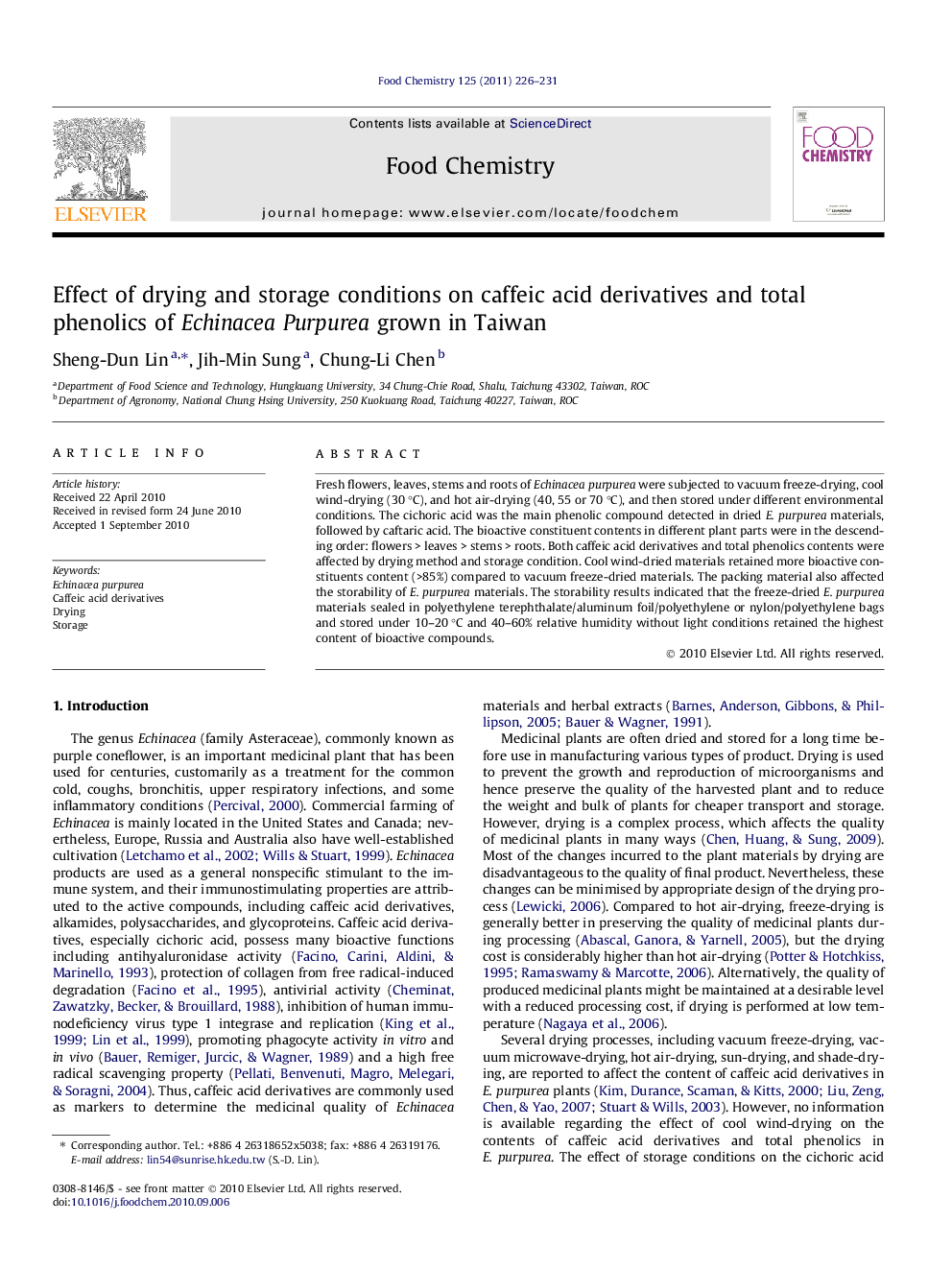| Article ID | Journal | Published Year | Pages | File Type |
|---|---|---|---|---|
| 1189689 | Food Chemistry | 2011 | 6 Pages |
Fresh flowers, leaves, stems and roots of Echinacea purpurea were subjected to vacuum freeze-drying, cool wind-drying (30 °C), and hot air-drying (40, 55 or 70 °C), and then stored under different environmental conditions. The cichoric acid was the main phenolic compound detected in dried E. purpurea materials, followed by caftaric acid. The bioactive constituent contents in different plant parts were in the descending order: flowers > leaves > stems > roots. Both caffeic acid derivatives and total phenolics contents were affected by drying method and storage condition. Cool wind-dried materials retained more bioactive constituents content (>85%) compared to vacuum freeze-dried materials. The packing material also affected the storability of E. purpurea materials. The storability results indicated that the freeze-dried E. purpurea materials sealed in polyethylene terephthalate/aluminum foil/polyethylene or nylon/polyethylene bags and stored under 10–20 °C and 40–60% relative humidity without light conditions retained the highest content of bioactive compounds.
